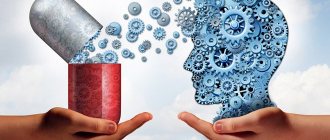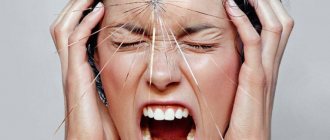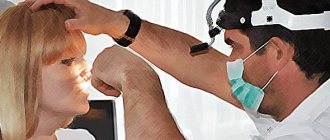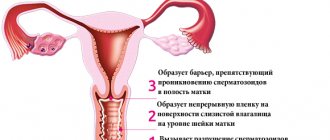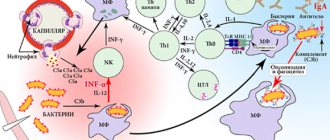Episodic muscle spasms are considered a normal physiological phenomenon, which can be caused by a lack of vitamins, poor circulation, or overexertion. Systematic cramps of the calf muscles at night should cause concern - the causes of which must be determined together with a doctor. Treatment of antispasmodic attacks depends on the factor that caused the disorder.
Why do my calves cramp?
Calf cramps are most often the result of overuse of certain muscle groups. Both ordinary people and professional athletes suffer from this manifestation of the pathological condition. Our body is also protected from serious injuries (cracks, fractures).
Also, cramps in the calves can occur when a person experiences any physiological changes. For example, pregnancy, puberty, menopause. And biological changes cause changes in the level of many substances in the blood, for example sodium, potassium, calcium. Convulsions sometimes accompany damage to the nervous system and stress.
A change in diet can also trigger this condition; cramps are often experienced by those who abuse alcohol.
Seizures can be a manifestation of diseases such as spasmophilia, eclampsia, epilepsy, brain trauma and tumors, and inflammation.
Seizures can be caused by serious illnesses. Therefore, if this disease occurs, you should consult a doctor.
Establishing diagnosis
If cramps are rare, and the attack was preceded by an active day, hard work or intense training, there is no reason to worry. It is enough to massage the limb and take a foot bath before bed.
If muscle spasms in the calves recur regularly and cause insomnia, you should consult a specialist and undergo a medical examination. The doctor will interview the patient, find out whether he has any other complaints, whether he has a history of chronic diseases, whether a similar picture was observed in his close relatives, whether he is taking medications and what preceded the development of seizures.
Depending on the cause of cramps, the patient is referred for consultation to a neurologist, phlebologist, surgeon, endocrinologist or traumatologist. Additionally, they take a general, biochemical blood and urine test, and, if necessary, examine the level of thyroid hormones of the thyroid gland.
Using MRI, CT, radiography, and ultrasound, soft tissue injuries, spinal column injuries, and intervertebral hernias are diagnosed. Angiography is indicated for diseases of the veins and large arteries. Based on the results obtained and medical history, the doctor makes a diagnosis and prescribes appropriate treatment.
Cramps are differentiated from muscle contractures, restless legs syndrome, rigid person syndrome, and neuromyotonia.
Common Causes of Calf Cramps
Convulsions can be caused by a variety of reasons: from disorders of the nervous system to a lack of vitamins.
The main causes of calf cramps:
- neurological disorders;
- hypertensive crisis;
- infectious diseases, including those accompanied by a sharp increase in temperature;
- poisoning and pathological conditions. Which lead to intoxication of the body;
- endocrinological disorders (diabetes, hypothyroidism and others);
- metabolic disorders; pregnancy;
- hysteria; uncomfortable leg position;
- problems with blood vessels in the legs, such as varicose veins.
Thus, cramps are only an indicator of a problem. And to get rid of them, you need to identify the cause and eliminate the underlying pathology.
Calf muscle cramps
Often, cramps in the calves occur in the morning when stretching in bed. There may be several reasons for this: lack of calcium, potassium and magnesium, varicose veins, flat feet. In athletes, cramps can occur due to heavy physical exertion and muscle fatigue. Stress, excess weight and a sedentary lifestyle also cause calf muscle cramps.
During training, a cramp may occur for the following reasons:
- along with sweat, water leaves the body, which washes away potassium and calcium;
- insufficient warm-up;
- large volume of training;
- excessive stress on one muscle group.
First aid
The main advice in this situation is quite banal - try to relax as much as possible. Often such actions really help. It is quite difficult to force the body to dilate blood vessels and calm down. Therefore, if this does not help, then you should follow a number of steps that will help you relieve painful muscle tension:
- Straighten your legs, lift your flattened leg up, pulling your foot as far towards you as possible.
- Massage the leg muscles thoroughly, paying special attention to the most painful part of the body. During the massage, movements should be made from bottom to top, from heel to knee.
- Raise your legs and place a bolster or pillow under them. Keep your legs in this state for several minutes.
- One of the more radical methods is to inject into the spasming muscles using a pin or needle. The main thing is not to overdo it.
Dangers behind the disease
Most often, spasms are observed in the calf muscle, located under the bend of the knee and stretching almost to the middle of the leg. It plays an important role in human life - it allows you to stand, walk, and perform various physical movements. The muscle is capable of significant stretching and contraction. It contains many blood vessels, nerve endings, plexuses of tendons and ligaments.
Now imagine that strong contractions occur in such a “rich” muscle! When the calf is in a relaxed state, the pain becomes so pronounced that the sleeping person jumps up sharply. When suffering, he tries to help himself with a massage, rubbing, or simple warm-up. It is usually difficult to immediately put the leg in order, so the victim unwittingly becomes a hostage to an unpleasant situation.
The spasm can affect the muscles of the foot, thigh and toes. In general, no matter where the leg cramps occur, there is always a load on the knee or ankle joint. Over time, this leads to negative changes in cartilage tissue and tendons.
Cramps in the calves treatment
The most important point in preventing cramps and spasms is taking special supplements and reviewing your diet. As noted above, a lack of potassium, magnesium and calcium in the body provokes seizures. We often lack the daily dose of these substances.
For those who suffer from cramps, it is recommended to take dietary supplements or medications with magnesium. Since this element is better absorbed in the presence of calcium, you should also take calcium supplements in combination with vitamin D, which improves its absorption.
The diet should be rich in fresh fruits and herbs. It is worth eating natural sources of calcium, magnesium and potassium every day. Drinking mineral water will also benefit.
- Calcium - milk, cottage cheese, cheese, almonds
- Magnesium - buckwheat porridge, walnuts, legumes
- Potassium - dried apricots, raisins, beets, sunflower seeds, garlic.
Treatment of cramps in the calves
If you have no side effects to the medicine, then we begin treatment:
1st stage of treatment
Magnelis B6, or Magne B6, or Magnesium-plus B6, in tablets. Buy from these drugs the one that will be cheaper. Adults take any of these drugs - 2 tablets 3 times a day, with meals, with a glass of water - for 1 month.
IMPORTANT:
These medications should be discontinued immediately if symptoms of excess magnesium in the blood appear, such as: severely slow heart rate (less than 60 per minute), double vision, sudden rush of blood to the skin of the face, headache, severe decrease in blood pressure, nausea, shortness of breath, slurred speech, vomiting, weakness, severe dizziness.
2nd stage of treatment
If the first stage does not help, then we move on to injections with B vitamins.
You need to buy 10 ampoules of Milgamma or Combilipen (whichever will be cheaper). And administer to adults intramuscularly, every other day, 1 ampoule (2 ml).
But if 5-6 injections of Milgamma or Combilipen do not make your legs feel better, then we stop giving these injections. And then we move on to the 3rd stage.
3rd stage of treatment
You need to buy calcium supplements, preferably in the form of carbonate. It is believed that it is better absorbed. For example, Complivit calcium D3. Or Calcium D3 - Nycomed. We buy the one that will be cheaper. For adults take:
- Complivit calcium D3 – 1 tablet 2 times a day, preferably with meals. The tablets are chewed or swallowed whole.
- Or use Calcium D3 - Nycomed: take 1 tablet of calcium D3 - Nycomed - forte daily or 2 tablets of regular calcium D3 - Nycomed.
- The course of treatment with calcium preparations is no longer than 1 month. Check contraindications!
Symptoms
Seizures manifest differently in everyone. The person may experience muscle twitching, tingling, burning, itching, or numbness. The symptoms of seizures depend on their type and cause. Common signs include severe muscle tension. It becomes hard, can change shape, and its relief is often visible through the skin, as it protrudes strongly. This spasm is most often accompanied by severe pain. It can last from 30 seconds to several minutes.
A cramp is most often accompanied by severe pain in the muscle.
Exercises to treat calf cramps
Certain exercises can help combat calf cramps. And also prevent contraction of the calf muscles.
Two types of exercises are used for this:
- exercises that are performed when a cramp occurs. In other words, to relieve spasm and relieve pain;
- exercises that are performed to prevent seizures and reduce the frequency of their occurrence.
If your leg is cramped, massage and muscle stretching will help relieve pain and discomfort.
The following exercises are suitable for relieving spasms:
- Straighten your leg. Then place your foot so that the toe is turned towards the knee. To further stretch the cramped muscle, clasp your foot with your hands and pull the toe towards you).
- Walk on your heels for a few minutes.
- Stand against a wall about half a meter away. Lean forward, extend your arms and touch the wall. The feet remain on the floor. Maintain this position for a few seconds and relax. Do the exercise for five minutes.
To prevent cramps, a bodybuilder just needs to eat right and take vitamin and mineral supplements. And if you take all the necessary measures for prevention, but seizures still occur, then be sure to consult a specialist.
How to deal with muscle spasm?
- If a severe cramp occurs suddenly right during training, you should try to stretch the problem areas with your hands very carefully, provoking an active blood flow.
- An effective stretch is to sit on the floor with your legs extended forward and pull your big toes. In case of acute pain, it is difficult to do this manipulation on your own; it is advisable to have outside support.
- Apply cold ice and hold until the pain subsides.
- If this is not the first time you have encountered such a problem, purchase a special elastic band (bandage, bandage) at a pharmacy or sports store. This simple product helps ease muscle contractions and reduce them to nothing.
- If the previous methods are useless to stop a convulsive attack, you should give an injection into the muscle. This first aid procedure should only be trusted by medical professionals who are experienced and qualified to perform it. Be sure to ensure compliance with all rules of sterility and disinfection, because in this way it is very easy to introduce an infection.
Prevention of cramps in the calf muscles
To prevent cramps in the calves, experts recommend massage. You can contact a professional massage therapist or do a massage at home yourself.
To achieve the best results, massage is best done after a bath, when the muscles are warm.
Stroking
Tones the skin, relaxes the calves, has a positive effect on the movement of venous blood, and removes excess salt. Can be performed with two or one hand.
Squeezing
This technique is similar to stroking. They do it more energetically and faster. Increases the temperature in the massaged area of the body.
Trituration
This is an action in which the hand does not slide over the skin, but moves it in different directions. You can rub it lengthwise and in a circle. Rubbing will improve blood flow to the massaged leg.
Technique:
- Sit so that your calf muscles are relaxed.
- Find a point in the center of your calf.
- take your hands, press lightly and rub for a few minutes.
Share link:
5 / 5 ( 1 vote)
